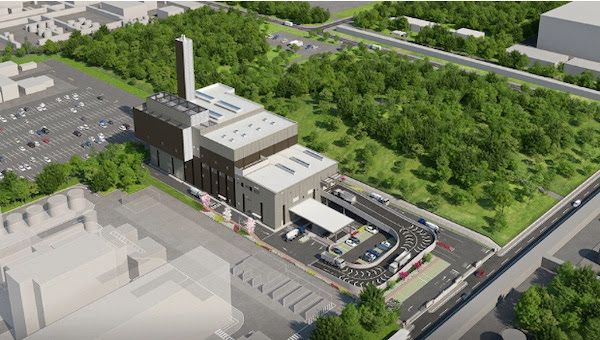MHIEC Receives Order To Construct Waste-to-Energy Plant With Capacity Of 230 Tonnes Per Day In Kamisu City, Japan
- Energy recovery-type waste management facility equipped with two incinerators each with waste treatment capacity of 115 tpd, providing greater than 16.5% power generating efficiency
- Company drawing on know-how for compact equipment layout that efficiently utilizes site area
TOKYO, Dec 2, 2020 - (JCN Newswire) - Mitsubishi Heavy Industries Environmental & Chemical Engineering Co., Ltd. (MHIEC), a part of Mitsubishi Heavy Industries (MHI) Group, has formally concluded a contract with the Kashima Regional Administration Association in Ibaraki Prefecture (comprising the cities of Kashima and Kamisu) to design and build a combustible waste management facility planned for construction in Kamisu city. The project to consolidate and replace two existing superannuated facilities was tendered as an open call for proposals, and after review MHIEC was selected to execute engineering, procurement, and construction (EPC) as a single main contractor. The contract is valued at 13,588 million Japanese yen, with completion scheduled for the end of the March 2024.

The new facility in Towada, Kamisu city will be an energy recovery-type waste management facility equipped with two stoker type incinerators(1), each with waste treatment capacity of 115 tonnes per day (tpd), providing power generating efficiency from the burning of combustible waste of greater than 16.5%. Since the construction site is in an exclusive industrial district surrounded by numerous companies, MHIEC will utilize its accumulated know-how to install compact facilities that effectively utilize the narrow site area in a three-dimensional manner, and take steps to control and prevent noise, vibration, and dust.
The Kashima Regional Administration Association was established in 1999 with the addition of responsibility for the administration of refuse-derived fuel (RDF) facilities to the former Municipal Kashima Regional Wholesale Market Association. The Association currently handles the establishment and operation of RDF facilities, construction of combustible municipal solid waste (MSW) facilities, and firefighting services for the cities of Kashima and Kamisu. This new facility will replace the RDF facilities in each of the two municipalities, and allow for integrated incineration of combustible waste, and energy recovery.
MHIEC succeeded MHI?s environmental equipment business in 2008, incorporating its accumulated technological development capabilities in environmental systems, and its broad expertise in the construction and operation of waste management facilities both in Japan and overseas. Based on this strong track record, MHIEC is well positioned to provide comprehensive solutions, from plant construction to operation, as well as meet a range of needs including after-sales service and DBO(2) project delivery. Orders for plant retrofit projects have been increasing in recent years.
Going forward, MHIEC will build on this record to actively pursue new construction of waste management facilities, as well as enhance the energy efficiency of existing plants, improve incinerator performance through support for remote monitoring and autonomous operation using AI and IoT, and offer solutions to lower lifecycle costs, in order to expand project orders in Japan and overseas.
(1) A stoker furnace is the main type of waste-to-energy (WtE) plant. Waste is combusted as it moves along on a fire grate made of heat-resistant castings.
(2) Design build operate (DBO) is a project delivery model in which a facility is financed and owned by a local government of other public agency, while a private contractor handles everything from design to operation.


 Carbon Market Watch: Going For Green - Is The Paris Olympics Winning The Race Against The Climate Clock?
Carbon Market Watch: Going For Green - Is The Paris Olympics Winning The Race Against The Climate Clock? New Zealand Defence Force: NZDF Working With Pacific Neighbours To Support Solomon Islands Election
New Zealand Defence Force: NZDF Working With Pacific Neighbours To Support Solomon Islands Election UN News: Ceasefire The Only Way To End Killing And Injuring Of Children In Gaza
UN News: Ceasefire The Only Way To End Killing And Injuring Of Children In Gaza ICHRP: US-Japan-Philippines Trilateral Summit Makes The Philippines A Battlefield For US-China Conflict
ICHRP: US-Japan-Philippines Trilateral Summit Makes The Philippines A Battlefield For US-China Conflict East West Center: Environmental Journalist Alexander Kaufman Receives East-West Center’s Inaugural Melvin M.S. Goo Writing Fellowship
East West Center: Environmental Journalist Alexander Kaufman Receives East-West Center’s Inaugural Melvin M.S. Goo Writing Fellowship Compassion in World Farming: Octopus Farm Must Be Stopped, Say Campaigners
Compassion in World Farming: Octopus Farm Must Be Stopped, Say Campaigners